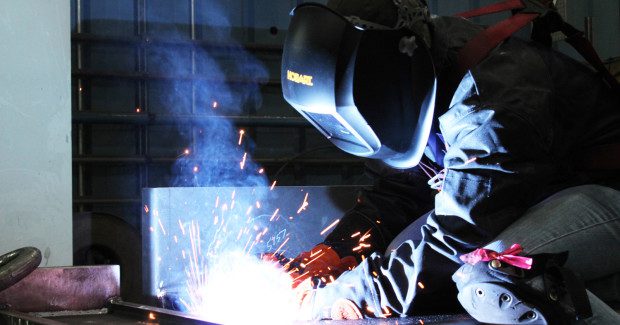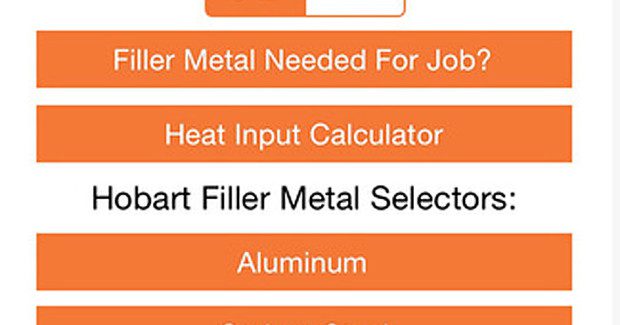Filler Metals: Accuracy in Ordering and Usage Matter
It only makes up about 20 percent of the cost of your typical welding operation, but incorrectly estimating the amount of filler metal needed can have a far-reaching impact to your bottom line.
Posted: March 3, 2015
Quality, productivity and profitability are all driving forces behind a successful welding operation. Achieving these goals is as much a matter of having the right people in place as it is having the right equipment. It is also important to have a solid understanding of the role that filler metals play in the process — particularly the impact that they can have on the bottom line.
It’s true that filler metals make up only about 20 percent of the cost of a typical welding operation; however, incorrectly estimating the amount of filler metal for an application can have far-reaching implications when it comes to a company’s profitability. When bidding for a job, overestimating the amount of filler metal needed for an application can cause the bid to be inflated and uncompetitive, while underestimating the amount can lead to costly delays when completing a job. Buying too much filler metal for an application can also lead to a surplus of product that isn’t usable and that is likely non-refundable. In each scenario, the miscalculations impact profitability.
FACTORS AFFECTING FILLER METAL CONSUMPTION
The joint design and welding process are the two main factors that directly impact the amount of filler metal needed for an application.
When it comes to joint design, the smaller the cross section of the joint, the less filler metal that will be required to fill it. That means that weld will also be less costly in terms of the amount of filler metal a company needs to purchase and inventory, and the labor spent to complete the weld. With that in mind, the goal is to create a joint that is small enough to offer cost efficiencies while also providing the strongest weld possible.
Narrow groove welds are one example of how fabricators, particularly those welding thicker plate, can design joints with smaller cross sections to reduce the amount of filler metal needed to complete a quality weld. When welding these types of joints, it’s necessary to have a welding process that provides good penetration so as to gain the best fusion. In the absence of a very penetrating welding process, a double-sided groove weld is an alternative when welding thick materials since it can easily be designed to provide a smaller total cross-sectional area.
To reduce filler metal usage and costs, it is also important that the joint to be welded has consistent tolerances with minimal fit-up issues. For companies producing their own parts, having the appropriate fixturing and/or automated cutting equipment processes (e.g., CNC plasma) can help achieve and maintain uniform joint geometry and fit-up so it requires less filler metal to complete a quality weld.
Companies should also look to welding processes that offer good deposition efficiency — the weight of the weld deposit versus the total weight of filler metal used during welding, expressed as a percentage. The more filler metal a welding process is capable of putting into the joint (as opposed to losing it in the form of fume or spatter, for example), the less product companies will need to purchase for an application. For some companies, switching from stick welding to a wire process like MIG is one way to gain these efficiencies. Whichever the chosen process, it is important to also consider how labor will factor into the equation for the application at hand. If a process offers good deposition efficiencies (like MIG), but isn’t as effective for the application (for example, an out-of-position weld) as another (like FCAW), it can add unnecessarily to the overall cost of an operation.
RESOURCES
It is important to have the right resources to make accurate estimates for the amount of filler metal for a job. For those who prefer a faster option than reviewing blueprints and calculating with basic geometry, there are filler metal calculators available (find them here) that can do the math. These programs require input of the joint details (for example, root opening and groove angle) and will then output how much filler metal is needed for a given length of weld. Some filler metal manufacturers also provide filler metal estimates for common weld joints and lengths in their catalogs and/or brochures.
When assessing the calculations provided from any resource, it’s important to remember that there can be extenuating circumstances that impact the accuracy of an estimate. For example, a company may accurately calculate the amount of filler metal for an application, but may have instances of overwelding (creating a larger weld than specified) occurring in the operation. Factors like training are important to prevent against such factors. Establishing quality control guidelines, weld inspection and other welding operation management can also help identify and remedy such issues, resulting in less filler metal consumption and greater profitability.

















